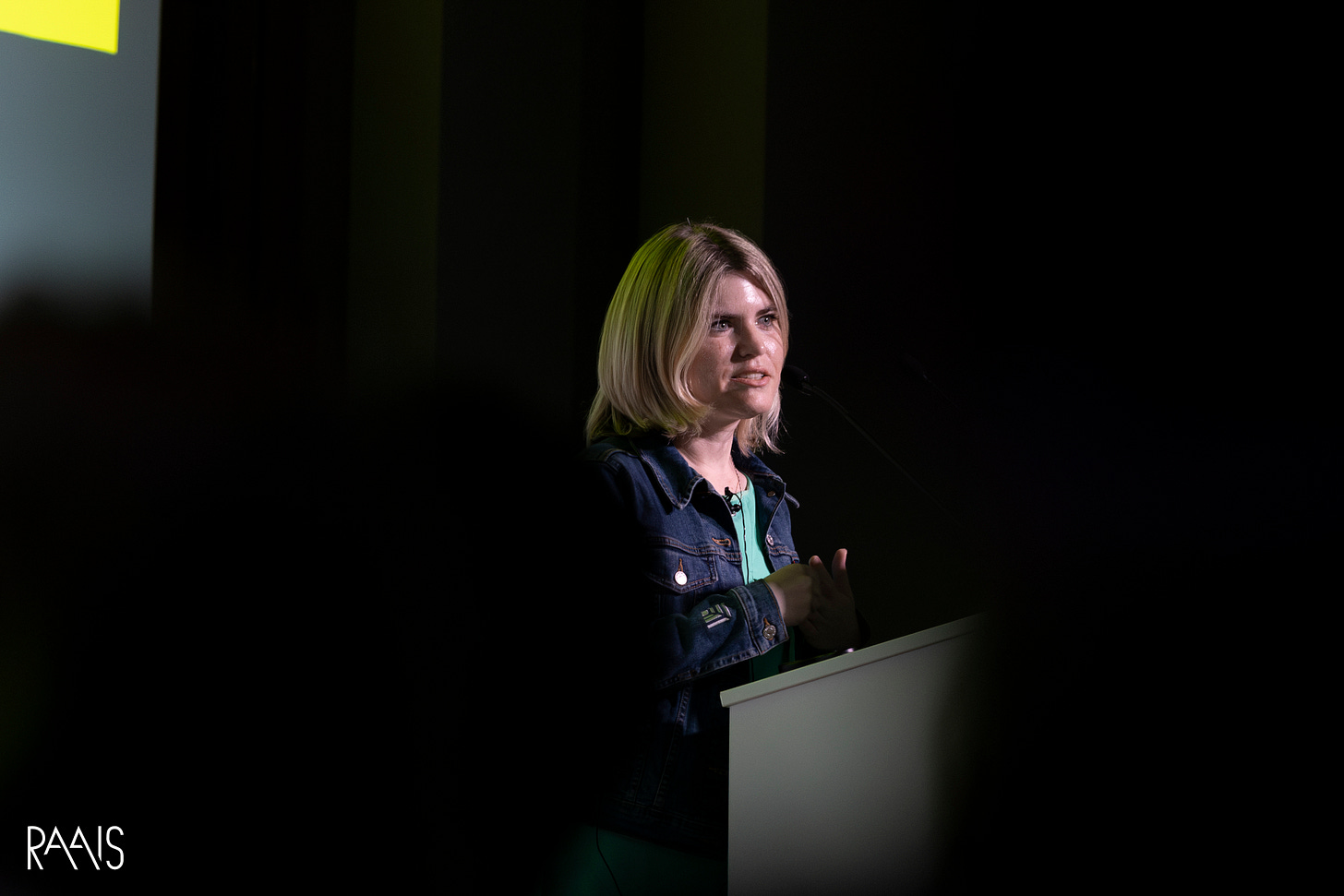From research to production with Gemini
With Paige Bailey, AI Developer Relations Engineering Lead at Google DeepMind at RAAIS 2025.
At this year’s RAAIS, Paige Bailey of Google DeepMind delivered her talk on AI research to production with interactive demos and a clear thesis: “I’m going to show you how to automate significant parts of your work.” Generative models are now a co-author, a debugger, a lab assistant, a video editor. And increasingly, models are doing the work behind the curtain while you coach and edit. Here’s her talk and a narrative of the key insights:
Natively agentic and multi-modal
At the center of her talk was Gemini 2.5 Pro, Google’s latest flagship multimodal model. The system doesn’t just understand text, images, video, and audio. It reasons across them, writes and executes code, grounds outputs in real-time search, steers tone, and self-corrects based on error traces.
Paige’s live demos were less about tools and more about nascent AI collaborators performing tasks that, until recently, defined entire job roles:
The AI Data Scientist: Prompted with a raw CSV file, an agent in Google Colab autonomously conceived and executed a full exploratory data analysis plan—from data cleaning and visualization to feature engineering and training a Random Forest model.
The AI Code Reviewer: A Gemini-powered bot in GitHub not only summarized pull requests but provided actionable, line-by-line feedback, catching everything from potential model misconfigurations to minor documentation inconsistencies.
The AI Co-Scientist: In the most profound example, a system of agents compressed a research timeline from a potential ten years to just two days, recapitulating and even discovering novel insights without prior human knowledge.
This rapid capability expansion inevitably raises critical questions about the future of work and the skills that will be most valued in an AI-native world. It shifts the focus from manual task execution to creative direction, critical thinking, and strategic oversight, essentially validating the AI's plan, questioning its assumptions, and interpreting the final output.
The cost of narrative is collapsing
Midway through her talk, Paige paused the demos and cued up a raccoon. Specifically: a raccoon in a black jacket, dancing in slow motion in front of the pyramids. In 2023, that prompt would’ve yielded a jittery GIF. In 2024, thanks to Google’s new Veo 3, it’s rendered as a cinematic sequence complete with smooth camera pans, ambient soundtrack, and emotionally matched voiceover.
Veo 3 is essentially close to a fully-automated media stack: scriptwriting, audio, direction, and edit, all orchestrated from a single prompt. Paige showed how it can spin up video ads, devrel explainers, and even documentation walkthroughs that auto-update with each SDK release. Prompt writing becomes the new scripting.
A powerful stack for the solo entrepreneur
Paige closed her talk with a striking message for founders: you can do far more, with less. Using tools like Gemini, Veo, and the growing constellation of AI-native infrastructure, the solo entrepreneur is a practical reality.
Generative models can now write and review code, conduct research, generate media, and keep documentation fresh. Paige referenced data from Carta showing a sharp rise in solo-founder startups over the past decade. It’s no coincidence, she claimed. The modern founder is scaling compute in favor of headcount.
The distinction between developer, researcher, and marketer is beginning to blur. One person, equipped with the right stack, can span all three. The implication for founders is clear: with fewer constraints and more agency, the bottleneck is no longer the team you can hire, but how quickly a single individual can now bring a world-changing idea to life. It’s now all too tempting to invoke an Elon-ism: “what did you get done last week?”.




